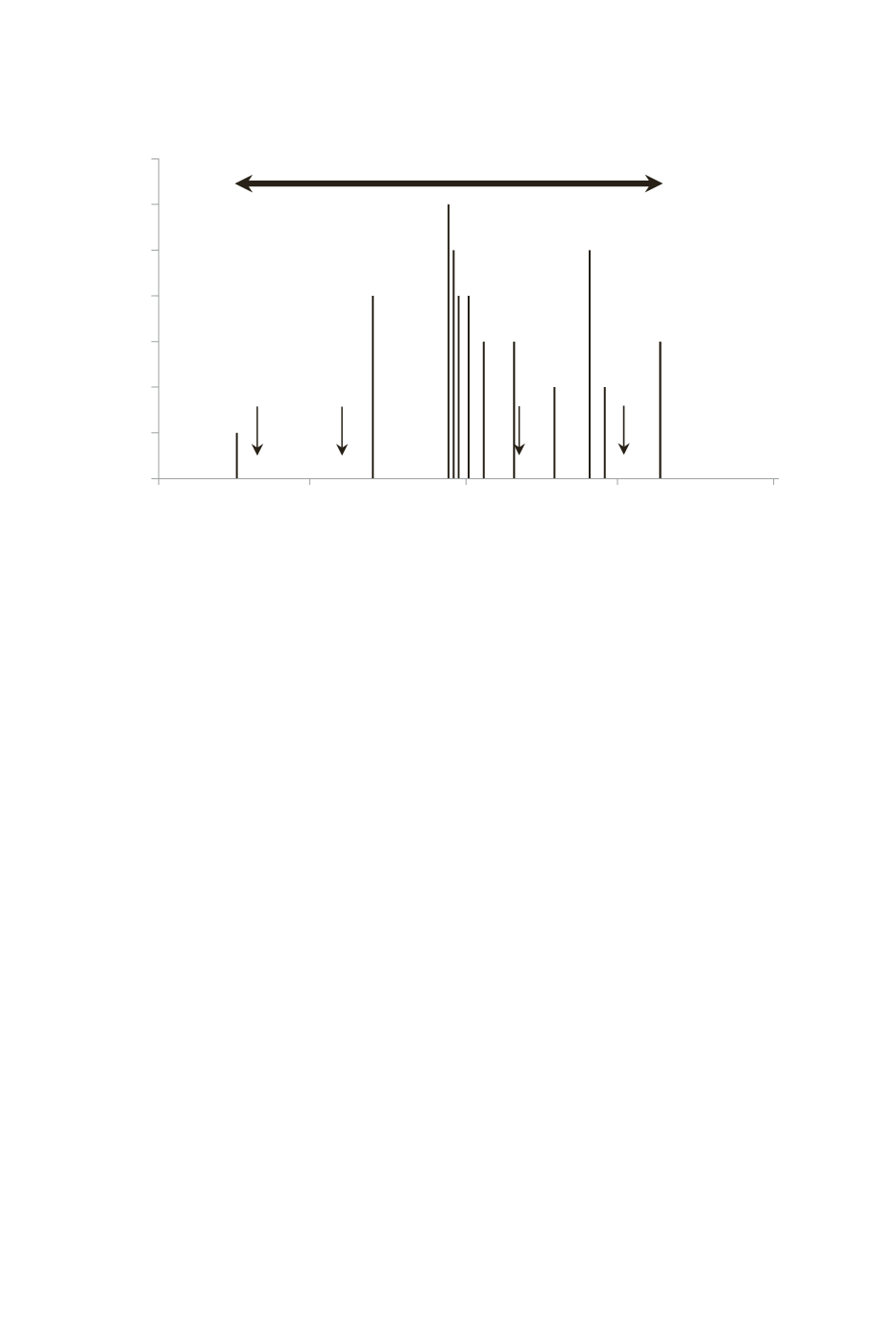
122 Spotted Crake habitat use
©Wildfowl & Wetlands Trust
Wildfowl
(2013) 63: 115–134
never heard singing from the deep water
channel on the west side of the site (area 1
in Fig. 1), the raised mire (area 2), dense
willow carr (area 4), dry cuttings (area 6),
restored wet acidic pasture (area 7), Soft
Rush
Juncus effusus
dominated restored
pasture (area 9), wet mosaic restored areas
(area 10), arable fields (area 11) or the willow
carr and reed beds around Lillsø (area 12).
Tracking of radio-tagged individuals
Four individuals were trapped in the centres
of the areas where they had been heard
singing for more than one night, single
males (based on the lack of facial spotting
and striation) were caught in Territories 1
and 2, and a male and female in Territory 3
(Fig. 1). A summary of the number of fixes
generated for each of the male birds with
radio transmitters is given in Table 1,
including an estimation of the minimum
convex polygons generated for each set of
positions of individuals. The positions of
these individuals are plotted in Fig. 3a (for
the birds in Territories 1 and 2 within habitat
type 8) and Fig. 3b (for the pair in habitat
type 5, as shown in Fig. 1). It is not known if
the loss of signals from these birds after the
last detection date represented battery
exhaustion, loss of transmitter from the
bird, death, predation or movement of
the bird out of range of the receiver.
Complete searches of the study area after
the last detection of each transmitter
were undertaken without detecting them,
suggesting no within-site movement had
occurred. We have no information on the
effects of the transmitters on the birds’
behaviour, but as they all were showed
definite movement between successive fixes
0
1
2
3
4
5
6
7
01-04-2013 01-05-2013 01-06-2013 01-07-2013 01-08-2013
Number of calling birds
1 April 2013 1 May 2013 1 June 2013 1 July 2013 1 August 2013
Figure 2.
Total daily numbers of singing Spotted Crakes detected at Lille Vildmose, northern Jutland,
Denmark during summer 2013. Observations were carried out irregularly between 16 April and 9 July
(shown by horizontal arrow). Observation days with suitable weather but no detections are shown by
vertical arrows.


